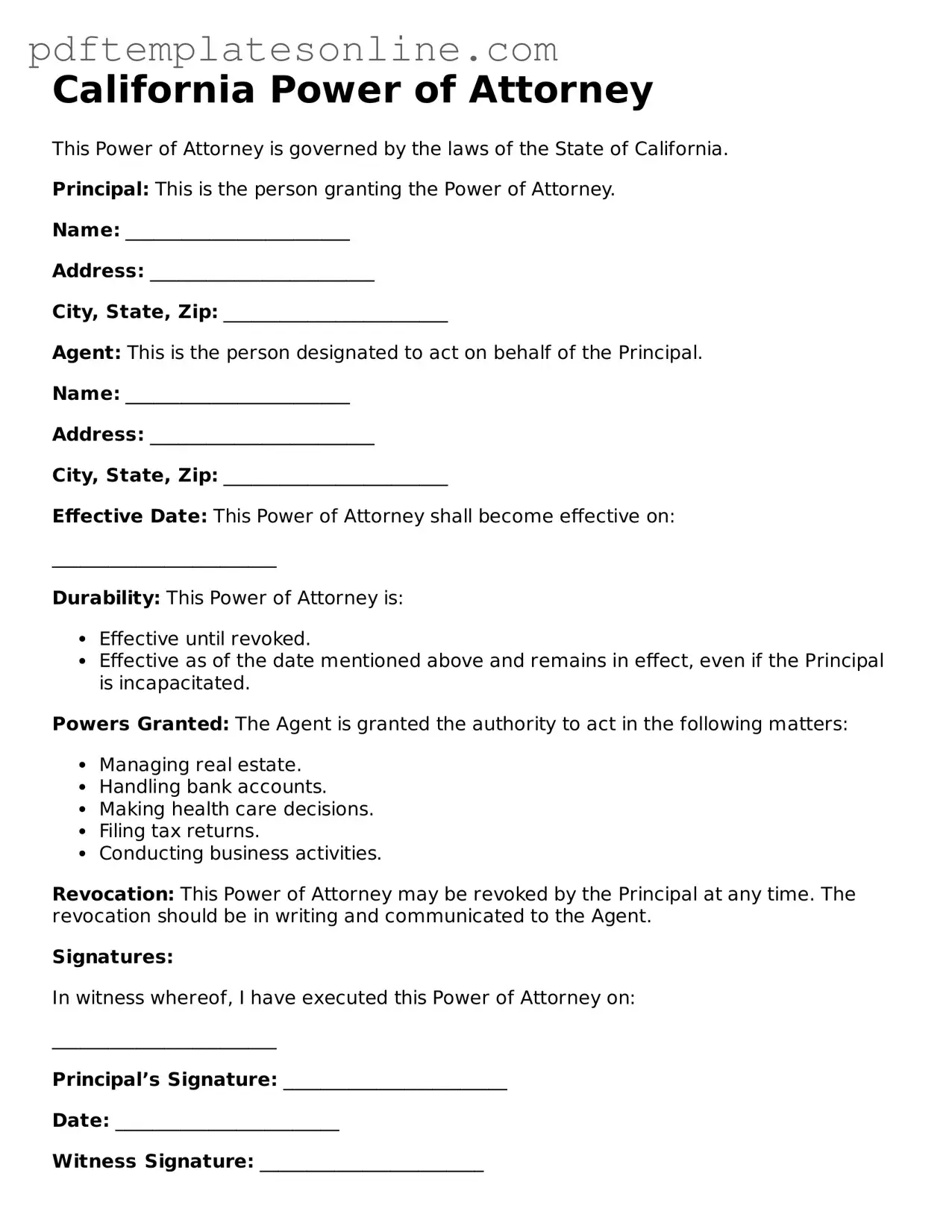Filling out a California Power of Attorney form can be a straightforward process, but many individuals make critical mistakes that can lead to complications. One common error is failing to specify the powers granted to the agent. Without clear delineation of authority, the agent may not be able to act effectively on behalf of the principal. This ambiguity can result in delays or even legal disputes.
Another frequent mistake is neglecting to date the document. A Power of Attorney must be dated to establish its validity. If the form lacks a date, it may be challenged in court, leading to questions about its enforceability. Ensuring that the document is properly dated is essential for its legal standing.
Many people also overlook the necessity of signatures. Both the principal and the agent must sign the document for it to be valid. If either party fails to sign, the Power of Attorney may not hold up in legal situations. This oversight can create significant obstacles when the agent attempts to act on behalf of the principal.
Additionally, individuals often forget to have the document notarized. In California, a Power of Attorney must be notarized to be considered valid. Without notarization, the form may not be recognized by financial institutions or other entities, rendering it ineffective.
Another mistake involves not providing alternate agents. In the event that the primary agent is unable or unwilling to serve, having an alternate agent designated can prevent delays in decision-making. Failing to include this provision can leave the principal without someone to act on their behalf in critical situations.
Some individuals also make the error of using outdated forms. Legal documents can change over time, and using an old version of the Power of Attorney form may lead to complications. It is crucial to ensure that the most current version is used to avoid any issues regarding validity.
Moreover, people sometimes fail to communicate their intentions clearly with their chosen agent. It is important for the principal to discuss their wishes and expectations with the agent before completing the form. Without this communication, the agent may act in ways that do not align with the principal’s desires.
Lastly, many individuals do not keep copies of the completed Power of Attorney. Having copies readily available can facilitate the agent's ability to act on behalf of the principal. Without copies, the agent may face challenges when presenting the document to banks or other institutions.
